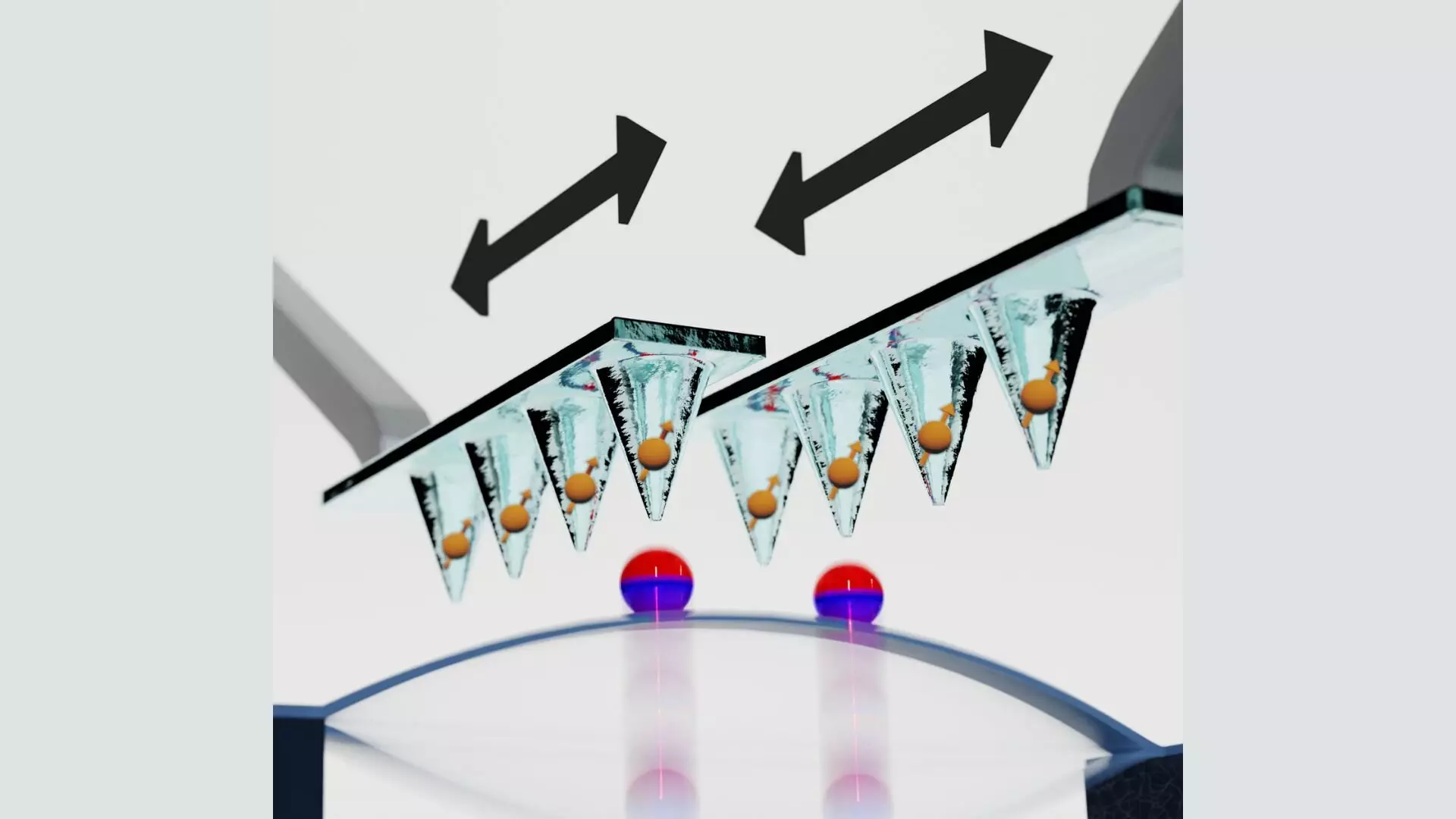The landscape of quantum computing is in a continuous state of flux, often defined by emerging technologies that promise greater scalability and enhanced performance. Researchers have long grappled with the inherent limitations of various qubit architectures, particularly solid-state spin qubits. Though these particles exhibit commendable long coherence times, essential for effective quantum state manipulation, their scalability has remained a significant challenge. A recent study published in Physical Review Letters pioneers a fresh approach by proposing a novel architecture that merges the capabilities of solid-state spin qubits with nanomechanical resonators, offering an exciting potential pathway towards robust and programmable quantum systems.
Addressing the Limitations of Spin Qubits
Solid-state spin qubits are compelling candidates for quantum applications due to their favorable environmental interaction profiles. Within the framework of Professor Mikhail Lukin’s research group at Harvard University, graduate student Frankie Fung highlighted a fundamental issue: existing configurations of small quantum registers leveraging solid-state qubits depend heavily on magnetic dipole interactions, which are restricted to incredibly short ranges—often measured in mere nanometers. This limitation complicates the construction and control of expansive qubit arrays critical for scalable quantum computing.
Much of this communication between qubits relies on proximity, creating substantial hurdles when attempting to realize interconnected networks of qubits. As Fung articulated, there is an urgent need for mechanisms that can facilitate long-range interactions among spin qubits, a critical element for establishing the entangled states necessary in quantum processing.
A Breakthrough with Nanomechanical Resonators
The innovative solution posited by Fung and his research team harnesses the oscillating properties of nanomechanical resonators to mediate interactions among qubits. By utilizing nitrogen-vacancy (NV) centers embedded within diamond structures as their primary qubit, the researchers tap into the incredible attributes of these defects, such as their resilience to decoherence and unique optical capabilities. This forms a significant advancement, as NV centers can be effectively manipulated using light, making them ideal for interfacing with and controlling quantum systems.
The proposed architecture ingeniously involves the deployment of scanning probe tips equipped with NV centers moving over a nanomechanical resonator. The key lies in the capability of this setup to facilitate non-local interactions between qubits, thereby surmounting the limitations of short-range magnetic interactions. Fung describes this system as a programmable means to connect and control qubit interactions, offering a flexible framework that could significantly broaden the horizons of quantum computing.
Exploring the Architecture and Functionality
The researchers’ design comprises a diamond nanopillar that houses NV centers, generating a magnetic field environment through an adjacent micromagnet located on a silicon nitride nanobeam. Impressively, this architecture supports a self-regulating mechanism wherein changes in electron spin states affect the nanomechanical resonator’s oscillation.
This interaction creates a feedback loop, allowing for dynamic adjustment and control of spin states throughout the system. Fung’s team conducted a proof-of-principle experiment demonstrating coherent information preservation while the micromagnet was manipulated across varying field gradients. Their results, exhibiting a quality factor of around one million at low temperatures, indicate the potential for sustained coherent mechanical oscillations, albeit still shy of the record-setting quality factors seen in some mechanical resonators.
A Vision for Future Quantum Applications
Looking ahead, the researchers express optimism for enhancements to this hybrid quantum system. One potential improvement involves integrating optical cavities with the nanomechanical resonator, allowing for more precise measurements of mechanical motion and potentially facilitating better state preparation. This pivotal leap could enable the transfer of quantum information between spin and mechanical systems with unprecedented efficacy.
Furthermore, the versatility of nanomechanical resonators lies in their ability to mediate a variety of forces, thus permitting interactions with diverse qubit types. Such diversity could leverage the unique strengths of various qubits while minimizing their weaknesses. The prospect of on-chip fabrication promises to blend these resonators seamlessly with other components in quantum circuits, heralding a new era of integrated and scalable quantum systems.
By exploring the pathways CHALLENGING established norms, this groundbreaking study not only outlines a critical advancement in the field of quantum information processing but also underscores the interplay of physical systems in crafting the future of quantum technologies. As researchers continue to push the boundaries, we stand on the precipice of transformative innovations that could redefine our understanding of computation itself, all thanks to the fertile ground being cultivated by these pioneering efforts.

